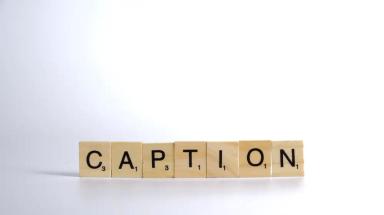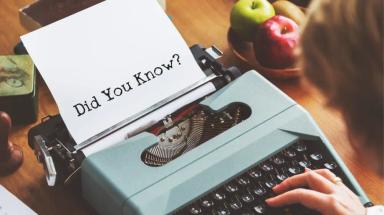As you start your publishing journey, it can become overwhelming to learn all the definitions of different terminologies. Don’t let the different terms confuse you. In fact, understanding the difference between them can help you with your editing needs. If you got sloppy with your first round of editing your writing then this blog is for you.
For many people, their battle with a major essay or book is only half done after they have finished writing it. They’re left with three basic steps to do: revise, edit, and proofread.
Get our editing and proofreading services now
A General Overview
REP: Revision, Editing, and Proofreading
- R stands for REVISION. Revising is about rethinking and rewriting sentences to improve general sentence flow, clarity, and meaning. Revision matters most for your paper because you want to ensure it is of high quality.
- E stands for EDITING. Editing is about getting rid of what does not serve a purpose—getting rid of anything that goes against logic or presents information that detracts from the main idea or theme. Editing focuses on tenses, and grammar usage among other principles of language.
- P, which is the last Acronym, stands for PROOFREADING. Proofreading accepts material for publication in its final form before it's printed on paper or transmitted electronically. Proofreading manuscripts before they go to print ensures fewer mistakes will slip through unnoticed by readers—it’s the actual checks of misspells, whether they be typographical errors or punctuation marks.
When editing your work, make big changes (moving paragraphs, deleting sections, adding new material) before making small changes (grammar, spelling, citation formats).
Revising is the first step in editing your work. It involves improving sentence structure, word choice, and other language features to make it sound more natural or graceful on paper. Editing uses language skills to correct errors and inconsistencies in grammar, spelling, or punctuation.
Proofreading goes last of all - giving careful checks of text before final publication by correcting any remaining small errors, giving the paper the last polish to make it turn out flawless.
If you want to produce high-quality content, follow these three simple steps. First, make sure your content is aligned with your initial vision. Next, edit and refine your work until you're happy with the final result. Finally, polish your report until every word is in its place.
Still confused?
We will discuss one term at a time.
Beyond Spelling Errors: Understanding Editing vs. Copy Editing
Revising
When you're done with your first draft, it's time for revision. The focus here is on whether or not you've accomplished all your goals for the writing. Are all the parts cohesive? Is your tone appropriate?
If you want to improve your paper, revision is key. It involves working with the larger strokes of the paper – reorganizing paragraphs, re-crafting subject matter sentences, and transitions, and possibly even introducing new material. It entails going over a manuscript and correcting plot points that are hard to follow, character motivations that are confusing, contextual details that will be lost on readers unfamiliar with the setting of the story, and generalizing vocabulary so words don't distract from the story's dialogue and flow. All of this takes time and effort, but it's worth it in order to create a high-quality final product that will make all the whole difference in the end.
After all, a well-revised paper is a thing of beauty!
Throughout revision, take the steps that follow:
- Content. Is the piece of writing finished? Is the information accurate and up-to-date?
- Organization. Is the information presented in a logical order? Is the structure consistent? Is the connection between the introduction and the conclusion clear?
- Style. Are the tone and manner appropriate for the situation? Is the flow of the sentences fluid and efficient? Is the diction correct, precise, and appropriate? Are there any mechanical flaws in the paper?
- Format. Is the assignment formatted correctly?
Of course, if you find a little problem, such as a misspelled word or an erroneous verb tense, correct it, but for now, concentrate on the big picture—adding, rewriting, and deleting sentences or paragraphs, rearranging the document structure and ideas, and so on.
Polishing Your Work: Tips for Editing Your Dissertation
Editing
After you've finished revising your paper, it's time to start editing!
Editing includes these tasks as well as making sure there are appropriate transitions between scenes and chapters, checking for dangling modifiers or unclear pronoun antecedents (i.e., who? what?), checking the active/passive voice and other grammar mistakes, adding chapter headings if they're needed, making sure your paper is written using clean, smooth language and that there are no awkward or puzzling phrases and more!
It is actually the time to tighten and clean up your language. Do you notice any grammatical, punctuation, or spelling errors? Read your paper out loud, does it sound right?
Follow these editing steps:
- My work has a centered title (H1) above the text and additional titles H2, H3…
- All my paragraphs are indented with spaces and margins, and there are no extra white spaces.
- My subjects agree with my verbs.
- My verbs are in the correct tense (past, present, etc.) and voice (passive vs. active).
- I double-checked my language.
- Keep a running note of errors that you are prone to, such as wrong article usage, word order, or plural/singular nouns, in addition to the frequent problems listed there to check.
- Don't force it to address your paper yourself – we understand that you have more exciting tasks. Writing a paper can be creative, but working on its shape and disposing of mistakes is dull. It's a completely mechanical process, so if you don't want to waste your time, it's better to delegate it to professionals.
Proofreading
Before you finalize a final draft that you can be proud of, you should perform proofreading. This part of the writing process is essential, as you can now see the entire photograph from the bigger picture. As you can imagine, proofreading should be done after revising and editing. It's like icing on your cake. If you've missed something during the earlier stages, now is your chance can fix it.
Proofreading requires reading through one last time in search of any remaining grammar or proofing mistakes like incorrect spacing before or after periods, misused apostrophes, missed or misplaced punctuations, etc. By scanning the overall composition for simple typographical, grammatical, and stylistic mistakes, you can catch surface-degree issues that may be modified fairly fast.
Proofreading is the perfect end, and it entails a final sweep through your manuscript, looking for flaws. When proofreading, you're looking for errors in sentence structure, syntax, vocabulary, pagination and layouts, titles and headings, lists, font and size format, nouns, verbs, and numbers as a final check. You also look for errors in spelling, spaces, upper and lower cases, and punctuation among other things.
Get our translation and writing services now
While proofreading, also be aware of the following:
- U.K / U.S style guide consistency
- Sentence fragment (missing/wrongly used prepositions and articles)
- Dangling or misplaced modifier
- Double negation
- Vague/ wrong pronoun reference
- Wordiness
- Faulty parallelism
- Fused, run-on sentences, and complex sentences
- Plagiarism
- References and Citations
If you're writing, you'll almost certainly introduce new errors. Make the major changes after you've finished editing. Return to proofreading after that.
Sip a cup of coffee or take a walk in the sunshine. At the very least, take a 40-second break and stare at anything far away from your desk. Then take a deep breath and put back on your proofreading hat. Check for errors by crossing over each sentence. Reading your work aloud—to yourself, a friend, or even a curious attentive pet—is an excellent way to detect mistakes.
Get our writing services now
Is a Proofreader The Same as an Editor?
Although a person can learn editing and proofreading skills and work as an editor and proofreader simultaneously, his job will require him to perform separate tasks and duties. A proofreader performs a surface-level check that should be the very last test performed on writing.
A proofreader will look for misspellings, wrong/overlooked punctuation, inconsistencies (textual and numerical), etc. An editor, on the other hand, is responsible for enhancing and correcting issues at the center of writing like sentence production and language readability. A radical enhancement will help improve the clarity, readability, and tone of the text.
Never consider revision and editing to be optional steps in the writing process. In fact, many thought leaders in the field of writing think that revision and editing are the only actual ways for a person to properly develop their writing talents.
Revising your writing is vital to your writing since it not only gives you the rare opportunity to see your work with fresh eyes but also allows you to learn and improve as a writer. As you review and edit your paper, you may come up with fresh ideas for your argument, prompting you to conduct additional research or take a closer look at something, enhancing your analytical and research abilities.
Alternatively, you might rewrite a whole paragraph to improve your writing and grammar skills. You might even opt to reorganize and restructure your work so that the stronger ideas are mentioned first, and the weaker or irrelevant points are omitted entirely — putting your decision-making and management skills to the test.
Get our content authoring services now
How Much Does Editing and Proofreading Cost?
Both jobs require common skills, but since editing commands more time, effort, and responsibilities, it usually costs more. We provide affordable, reasonable, and appropriate prices for the marketplace and our clients. There is no set price for the document or project that needs to be completed, but it is determined by a number of important elements:
- Duration
- Writing Industry/Field or Specialty
- Language difficulty
- Number of pages/words
Get a quote now and let our translators bridge the gap between languages!
Why Choose Leaders Company for Your Editing and Proofreading Needs?
All three of these concepts are essential and challenging at the same time. Writing a paper, you're running as an artist! You could experience awkwardness trying to juggle it all but you can't just ignore it and supply the paper as it is. It needs to look professional in order to properly reflect your image and work.
The coolest information is that you can continually ask for assistance. Our professional team at Leaders is constantly equipped to provide you with a skilled editor and a team of proofreaders who will look at your topic, identify its flaws, and correct them all. We have the experience and expertise to help you get the most out of your writing so you can focus on what's important - creating great content!
Upload your file now and watch it seamlessly transform into any language of your choice!






